«Distant grey island» — a report from Pirallahi, Azerbaijan
Pirallahi island in Azerbaijan
It’s 35 degrees Celsius outside. The air is stifling. The streets are almost empty.
Pirallahi Island is located about 63 kilometers from Baku, Azerbaijan. It is the largest island in the archipelago of the same name in the Absheron Bay of the Caspian Sea.
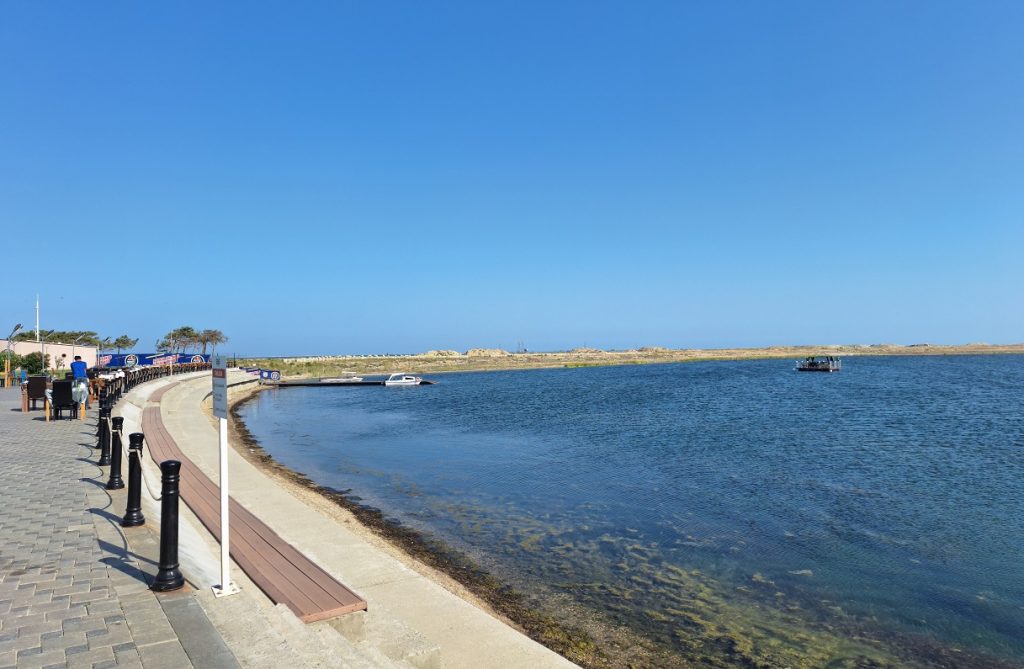
A three-hour bus ride without air conditioning
There is no direct public transport route to the island. The most convenient way is to take a bus to the center of the Gala settlement, and then transfer to another bus to Pirallahi. As a result, the journey to the island by public transport from the nearest metro stations, “Ulduz” and “Koroglu,” takes at least three hours.
The buses running on route No. 150, the only public transport within the settlement, are old, broken down, and lack air conditioning and heating.
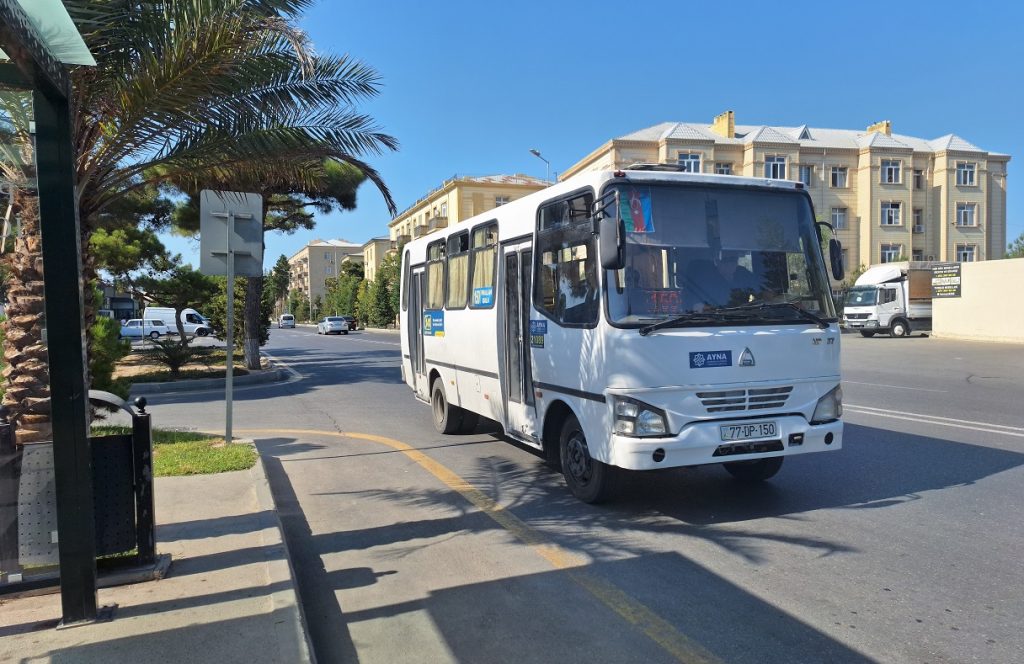
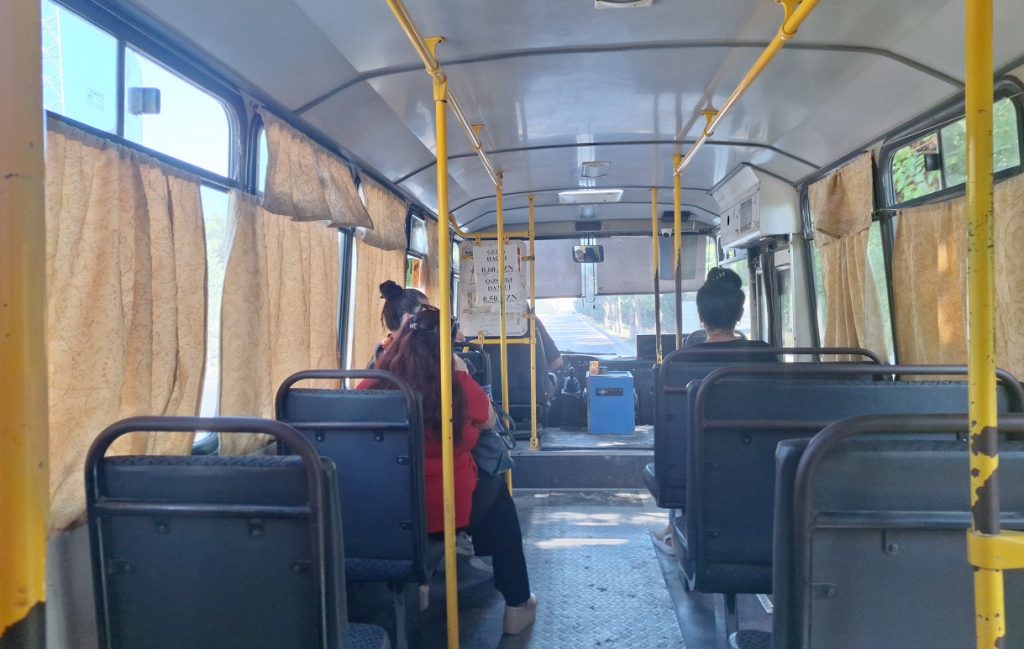
Pirallahi residents say they used to pay 3 manats [about $1.80] per person to take a taxi from the nearest metro station to the island. However, new regulations governing taxi services in the country have made this method almost impossible. Due to a sharp reduction in the number of taxis, finding a “3 manats per person” car has become much more difficult.
Pirallahi Island: the history
Pirallahi Island, a settlement, is part of the administrative territory of the Pirallahi district of Baku city. The district also includes the settlements of Chilov, Oil Rocks, and Gürgan. According to the official website of the Pirallahi District Executive Power, the island-settlement covers an area of 17.56 square kilometers, with a population of just over 17,000 people. But since there are no more jobs on the island, most residents have left for the city in search of work.
Mass settlement of the island dates back to the 1920s and 1930s, when the first oil fields began to be developed here. In 1936, the island was named “Artyom Island” after the revolutionary Fyodor Sergeyev, known as “Artyom.” After independence, the old name was restored.
Before the collapse of the Soviet Union, the settlement was mainly inhabited by the families of oil workers, and the ethnic composition of the residents was quite diverse.
Since there was no direct land route to the settlement for some time, boats, ferries, and ships were used for transportation between the island and the peninsula. When there was a storm at sea, the connection with the island was completely cut off. Therefore, in 1939, a dam—a bridge-dike—was built, connecting Pirallahi Island with the Absheron Peninsula.
The dam was so narrow that cars could barely pass one by one. And when there was a storm, it would remain underwater. This situation persisted until recently. But about ten years ago, the dam was repaired and upgraded, and the road became much wider.
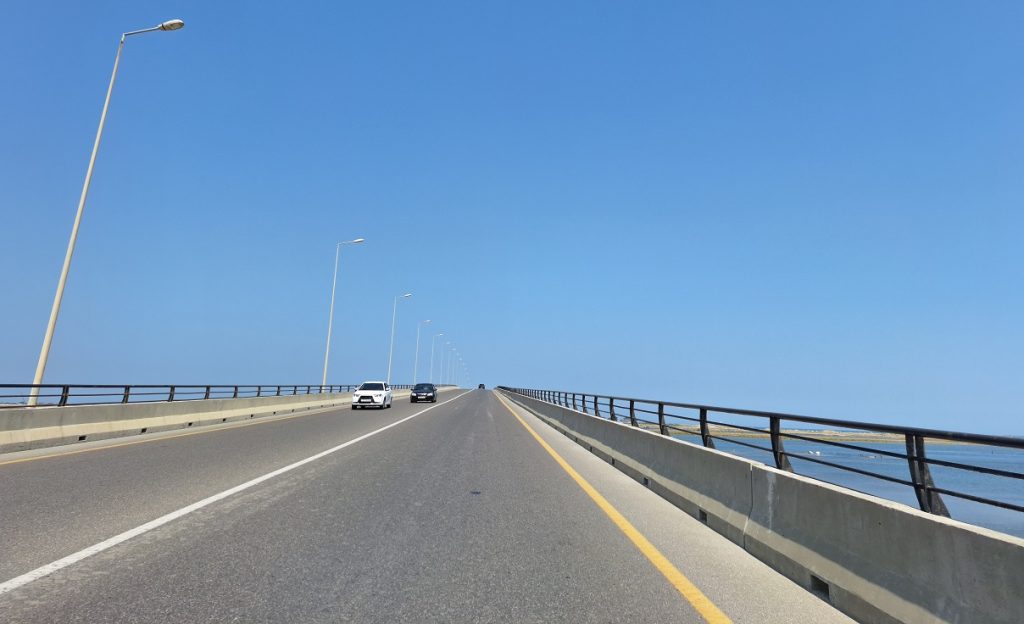
By Helicopter to Chilov Island and Oil Rocks
A small portion of the population still works on the oil fields. However, the primary source of income for the island’s residents is fishing.
Fishing boats are lined up along the shore right at the entrance to the settlement, waiting for the next “hunt.”
“It’s midday now, so no one is there. The fishermen come either in the evening when it’s dark or early in the morning,” says one of the workers at the fish market on the shore. Deciding that I would return here on my way back in the evening, I continue my journey.
A little further ahead, the island’s helipad comes into view. Since there is no land route from Chilov Island and Oil Rocks to the peninsula, they can only be reached by sea or air. Helicopters are mainly used to transport oil workers.
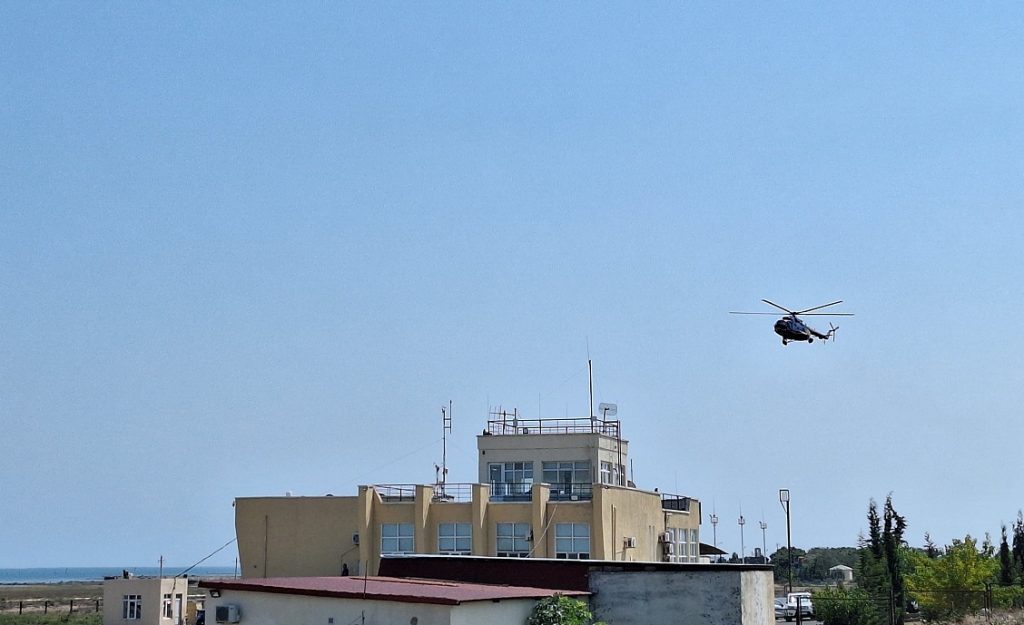
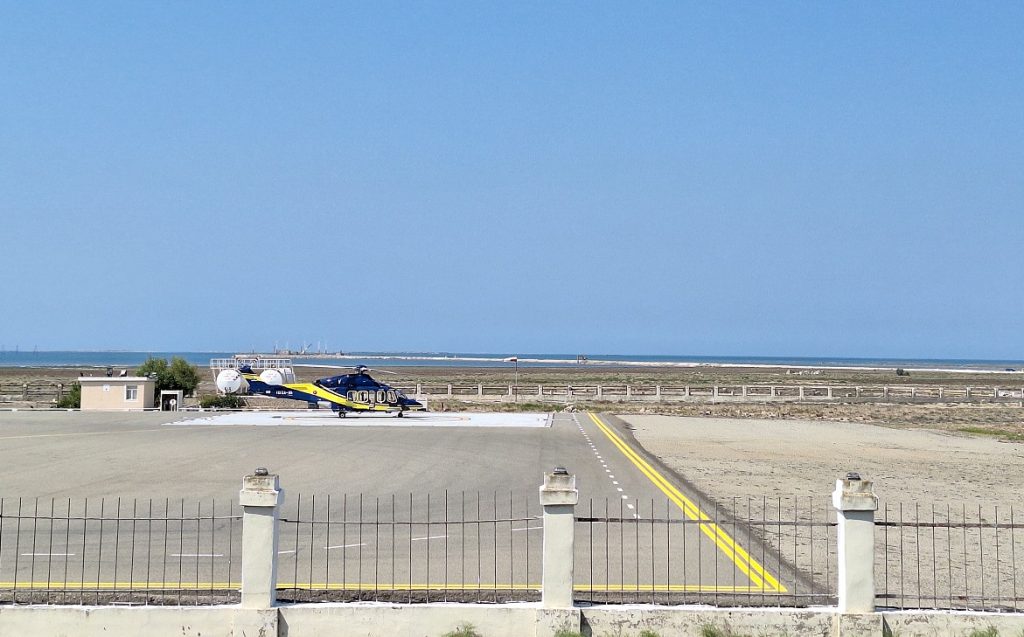
30 years as an oil worker and a $305 pension
“We extract the oil, but the oil money doesn’t reach us. I’ve been retired for two years now, receiving 520 manats [about $305]. It’s only enough for utilities and medicine. And I worked on the oil fields for so long that my hands are stained black for life,” says former oil worker Uncle Ali, showing his calloused palms.
Uncle Ali is 67 years old. He says he worked at Oil Rocks for over 30 years. He used to live in Baku. No matter how far his job was, he never thought about moving to Pirallahi or Oil Rocks. But a woman he once met on the island made him change his mind. That woman—his wife Aida—passed away seven years ago.
“When I saw Aida, I realized that even if I wanted to, I wouldn’t be able to live outside this place,” Uncle Ali laughs. “We got married, and my late father bought us the apartment where I still live. Fate. It so happened that we didn’t have any children. I was the only child in my family. After my parents passed away, I had no one left except Aida. Then she left too.”
Now Uncle Ali spends his days with friends at an old teahouse in front of his house so as not to be completely alone.
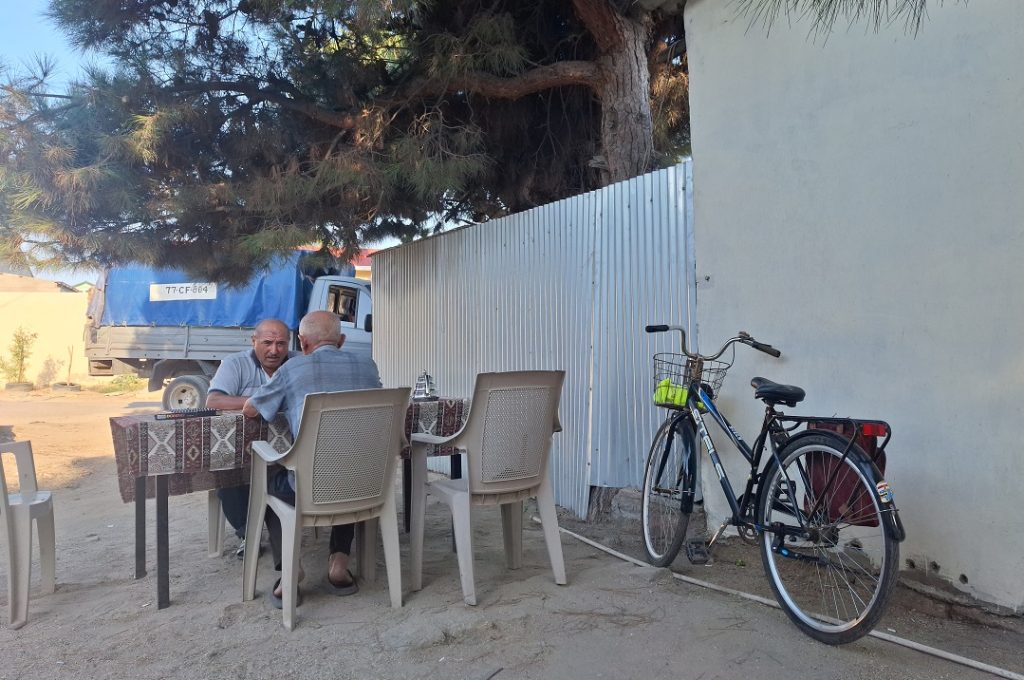
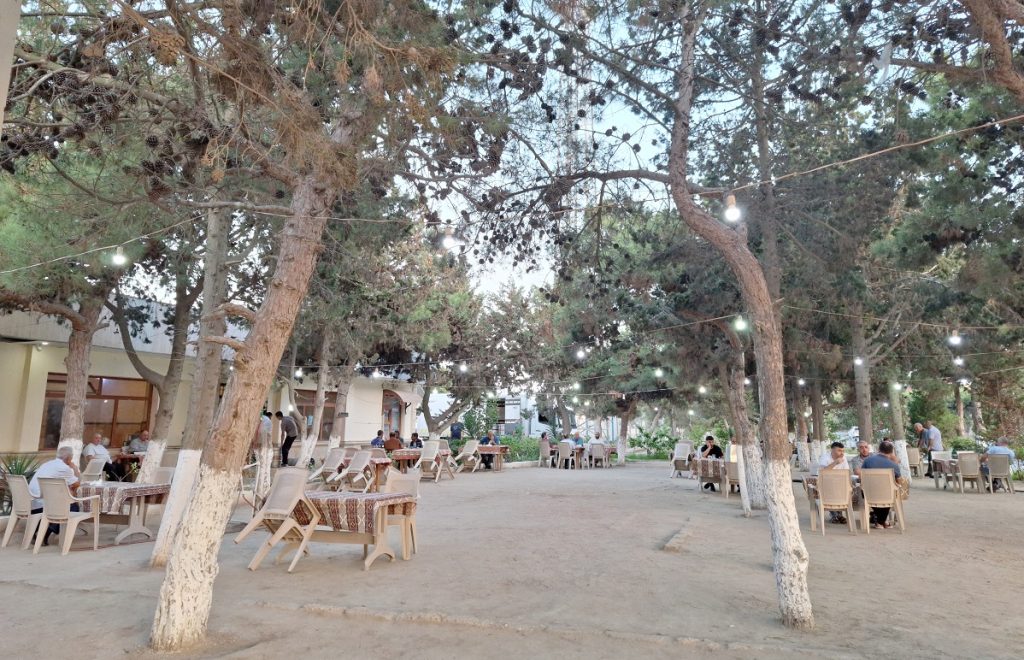
Distant and grey island
The streets in the settlement of Pirallahi are almost empty during the day. The island’s residents, whom I rarely encounter along the way, are mostly children and the elderly.
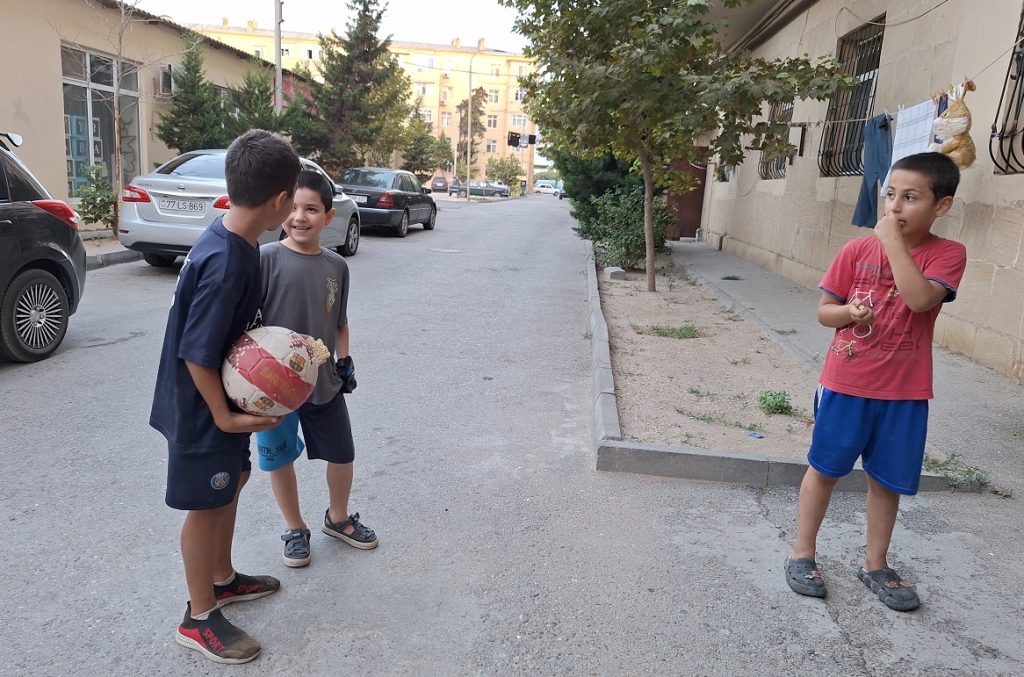
Apart from a few restaurants in the center of the island and a teahouse where mainly pensioners gather, it is hard to find places for relaxation and entertainment here.
The environment of neatly aligned five-story buildings is completely silent. It seems as though no one has lived here for a long time. The hot air, empty streets, and silence combine to create a very grey and monotonous picture.
One resident says that, since there are not many employment opportunities on the island, most people travel to central Baku for work. Those who tire of commuting three hours each day to and from the city center eventually move to Baku permanently. Young people who wish to attend university also leave Pirallahi.
“They are right to do so. What is there for them here? I’m an old woman, so it doesn’t matter to me. But the young people should go to Baku to study and find work. Even getting water on time is a problem here. We often have to buy water brought by trucks from the village of Zira,” says an elderly resident, sitting on one of the benches in the park.
Only with the onset of darkness do the streets, which have been empty all day, slowly come to life. Families can be seen walking with their children in the “Ganjlik” and “Mirvari” parks in the center of Pirallahi. However, there are no special playgrounds for children’s entertainment here.







Fishing – once a hobby, now a source of income
A cool evening is considered the perfect time for those who come to the shore to fish. Some of them have already taken up their traditional spots along the coast.
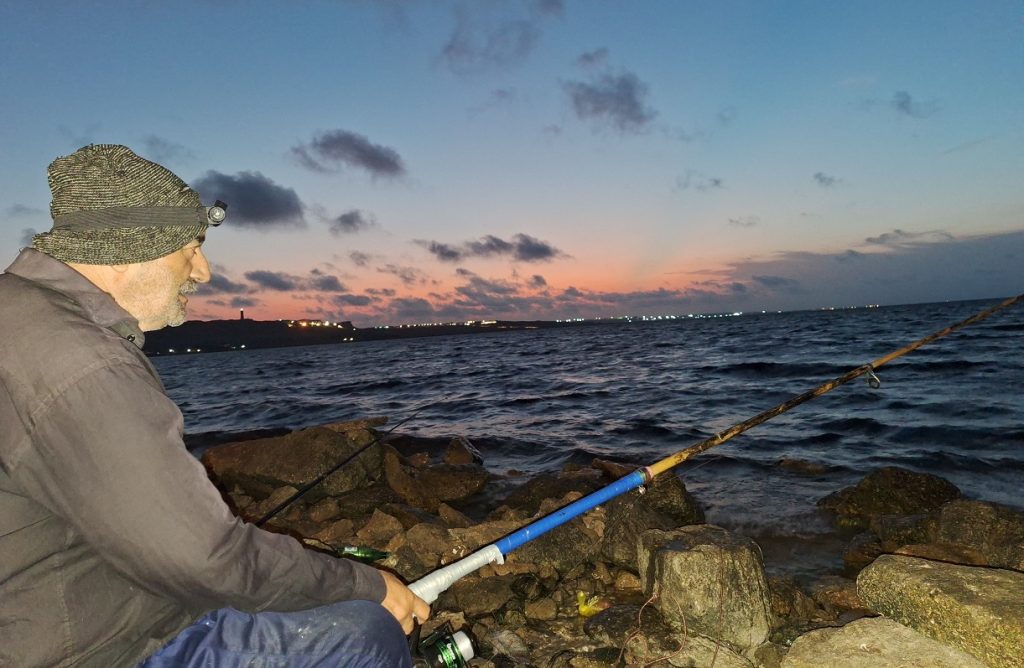
“I’ve been doing this for 25 years. It used to be a hobby for me. But over time, I’ve found that I’ve become addicted to fishing. I have nothing else to do. That’s why I’m here almost every day with my fishing rod,” says fisherman Rashid.
According to him, he arrives at the shore when there are still few fishermen, so no one can beat him to his traditional spot. He always fishes from the right side of the bridge, on the small rocks.
“Ah, looks like I’ve caught something. Yes, definitely caught it,” he says, just a second before pulling a carp out of the water.
“This is a small carp. I’ve already caught two. But there used to be bigger fish here. As the water in the sea decreases, only small fish gather near the shore. The big ones are over there, in the deeper water.”
Fisherman Rashid sells the fish he catches at the “Nerakyand” fish market right on the shore.
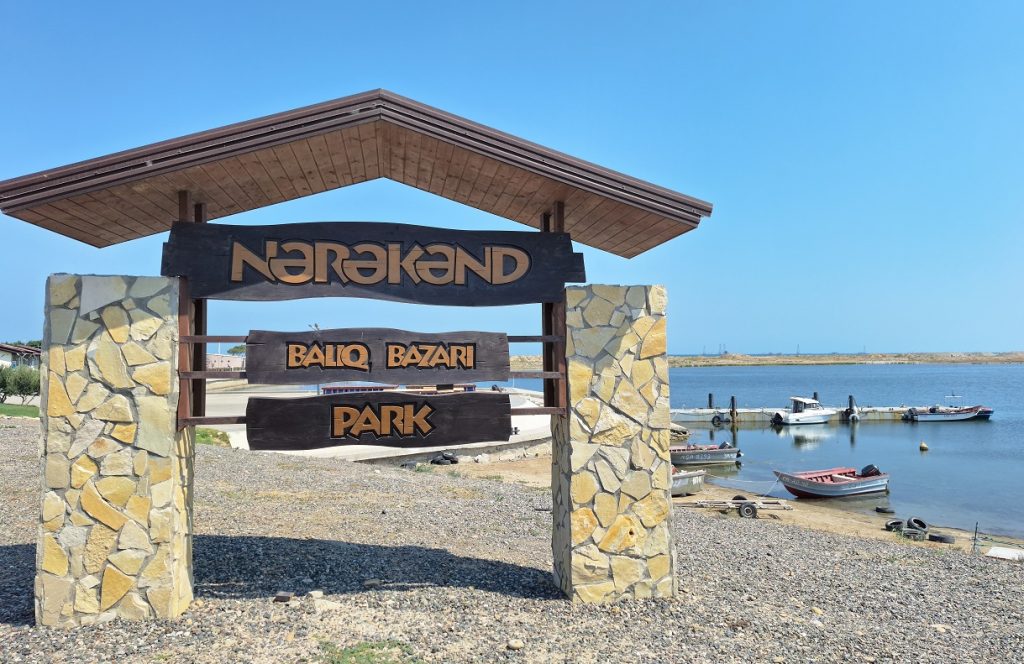
“Аt least two or three of the fish I catch each day, I definitely set aside for home.”
Rashid is convinced that if Pirallahi were properly developed, it could attract tourists. In his opinion, this would not only improve the lives of the residents but also encourage those who left the island to come back.






















